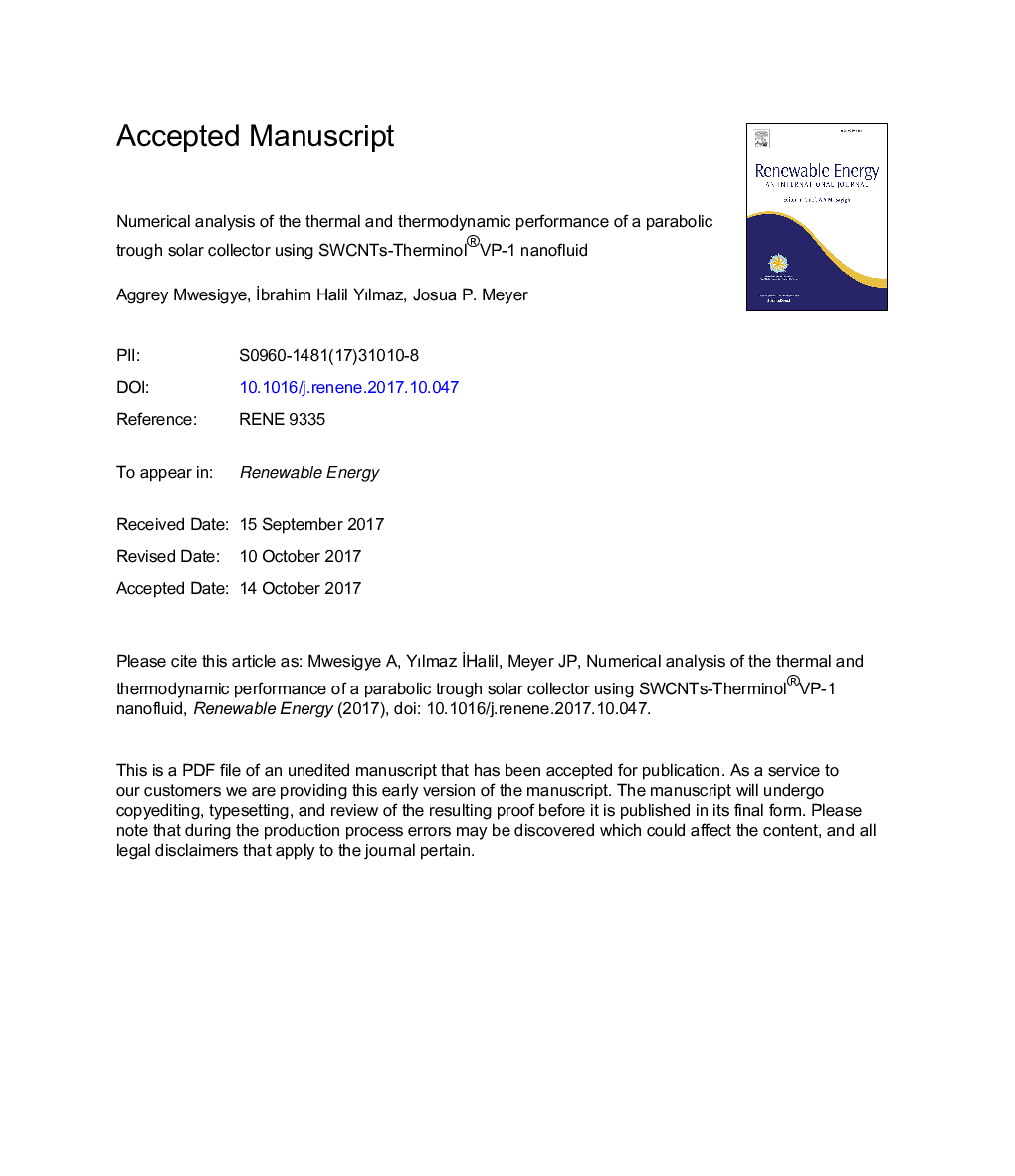| کد مقاله | کد نشریه | سال انتشار | مقاله انگلیسی | نسخه تمام متن |
|---|---|---|---|---|
| 6765045 | 1431585 | 2018 | 54 صفحه PDF | دانلود رایگان |
عنوان انگلیسی مقاله ISI
Numerical analysis of the thermal and thermodynamic performance of a parabolic trough solar collector using SWCNTs-Therminol®VP-1 nanofluid
دانلود مقاله + سفارش ترجمه
دانلود مقاله ISI انگلیسی
رایگان برای ایرانیان
کلمات کلیدی
موضوعات مرتبط
مهندسی و علوم پایه
مهندسی انرژی
انرژی های تجدید پذیر، توسعه پایدار و محیط زیست
پیش نمایش صفحه اول مقاله

چکیده انگلیسی
In this paper, energetic and exergetic performances of a parabolic trough solar collector using single-walled carbon nanotubes (SWCNTs)-Therminol® VP-1 nanofluid were numerically investigated and presented. The main objective of this investigation was to determine the influence of high thermal conductivity SWCNTs suspended in the widely used heat transfer fluid, Therminol®VP-1 on the performance indicators of the parabolic trough solar collector. A parabolic trough system with a high concentration ratio of 113 was analyzed in this study. The thermo-physical properties of SWCNTs were taken as functions of nanotube length, nanotube diameter, and temperature, while the properties of Therminol®VP-1 were considered to be temperature dependent. The study involved determination of the actual heat flux profile through Monte Carlo ray tracing and the subsequent coupling of this heat flux profile to a computational fluid dynamics tool using user defined functions. The computational fluid dynamics tool was finite volume based, and the realizable k-ε model together with enhanced wall treatment were used for turbulence modeling. The entropy generation rates were obtained directly from the local velocity and temperature fields of the computed domain and later used in the exergy analysis. Results showed that although the heat transfer performance significantly improved with the use of SWCNTs, the increase in the thermal efficiency was not substantial. For the considered range of parameters, while the heat transfer performance increased up to 234%, the thermal efficiency increased around 4.4% as the volume fraction increased from 0 to 2.5%. The corresponding reduction in the entropy generation was about 70%.
ناشر
Database: Elsevier - ScienceDirect (ساینس دایرکت)
Journal: Renewable Energy - Volume 119, April 2018, Pages 844-862
Journal: Renewable Energy - Volume 119, April 2018, Pages 844-862
نویسندگان
Aggrey Mwesigye, İbrahim Halil Yılmaz, Josua P. Meyer,